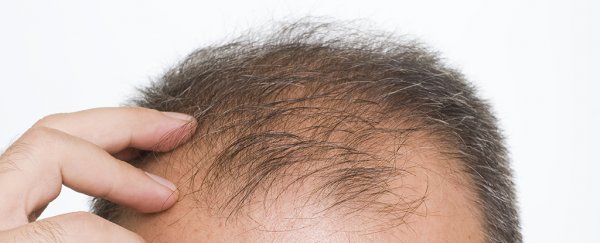Scientists think they've found one of the main reasons hair doesn't grow back on wounded skin, based on tests on mice – and their research could help develop better hair loss treatments in the future.
The key is apparently the sonic hedgehog signalling pathway and the proteins its genes encode: named for the spiky appearance of its molecules, this pathway is very active in the womb when hair follicles are being formed, but is noticeably less busy in damaged skin in healthy adults.
By stimulating communication along the pathway in fibroblast cells – the ones that release the collagen protein that gives skin and hair its shape and strength – the researchers were able to grow hair on wounded skin in mice with a few weeks… and that's a big deal.
"Our results show that stimulating fibroblasts through the sonic hedgehog pathway can trigger hair growth not previously seen in wound healing," says one of the team, cell biologist Mayumi Ito from NYU Langone Health.
If we can get the right skin cells as chatty as they are in their embryonic form, we could eventually get hair growing back on skin damaged by scars and burns, as well as helping restore hair growth in people who've gone bald.
That's still some way off – this research has so far worked in mice – but we now have a better understanding of the biological processes happening behind the scenes, when scarring and collagen buildup is happening naturally in a wound.
The hope is that the scarring process might eventually be adapted to trigger hair regrowth by changing some of the signals sent between cells.
In the past, reactivating the sonic hedgehog pathway has led to problems with tumour growths, so to guard against this the team concentrated on fibroblasts (known to promote healing), and only those fibroblasts just beneath the skin's surface.
This is where the hair follicle roots or dermal papillae first appear, so in some ways it's like setting up base camp for renewed hair growth. You won't be able to go out and buy a magical baldness cure in the near future, but we're getting a little closer.
It's a problem that's being tackled from multiple angles too: earlier this year research showed that hair follicle regrowth could be triggered by certain smells too, setting off a chemical reaction to stimulate the reappearance of hairs.
Meanwhile, last year another team of scientists identified a protein responsible for controlling hair growth and regeneration; like this new study, the experiments only covered mouse models.
However, mice are a pretty good - although not perfect - substitute for humans in studies such as this one.
What we do know is the sonic hedgehog gene is responsible not just for hair follicles but also for limb and organ growth in the womb, so it's a fundamental part of how our body develops.
The next step for the researchers is to find genetic or chemical triggers that could help activate the gene again when it's been knocked out of commission.
"Now we know that it's a signalling issue in cells that are very active as we develop in the womb, but less so in mature skin cells as we age," says Ito.
The research has been published in Nature Communications.
